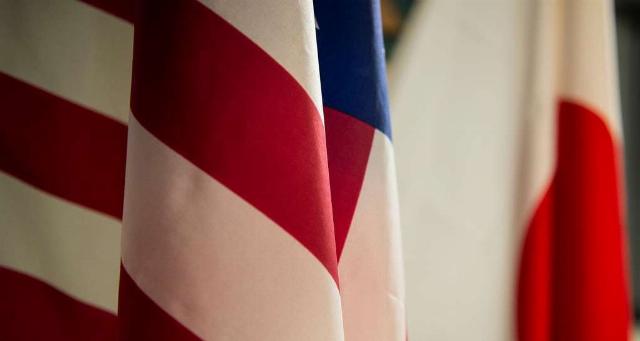
In ancient Japanese mythology the Golden Kite, one of the highest decorative orders of the Japanese military, was a messenger bird which enabled the Emperor Jimmu to defeat his enemies. The order was abolished in 1947 after American occupation. Yet now the spirit of the Golden Kite is back, all at the behest of the U.S. However, the Japanese will be wary of the myth of Icarus, of flying too near the sun and having its wings burnt.
The ‘Entente Cordiale’ began in 2023 with U.S. Secretary of Defense Lloyd Austin preparing the way for the MOU (Memorandum of Understanding for Research, Development, Test, Evaluation Projects). This will develop cooperation in ballistic missile intercept systems (GPI — Glide Phase Interceptor). Japan will now reexport Patriot missiles, having a license from the U.S. Japan is seeking to nurture new technology knowhow in the defence industry. However, some are not so bullish about U.S.-Japan military ties. The Diplomat mentioned that:
‘Concerns remain, however, about the barriers to harness this momentum. On the part of Japan, for example, while many Japanese see this period as the most severe post-war security environment, and there is a call for greater support to enhance security and stability in the region, there is an internal cultural barrier that resists Japan’s increasing organic defence capability, slowing Tokyo’s ability to implement tangible outcomes.’
There are deep historical divisions between the U.S. and Japan. Yet in today’s geopolitical world of flux and realpolitik the cold-war divisions of ideological foes is redundant. No more the clear-cut ‘Capitalism-Communism’ division. In the new epoch of resource and global realignment the most unlikely of bedfellows operate. However, with World War II a not-too-distant memory, there are echoes of Hamlet’s disgust at his mother’s remarriage after his father’s death: ‘The funeral baked meats did coldly furnish forth the marriage tables.’
The U.S.-Japan alliance illustrates the convergence of strategic interests, despite past differences. It appears huge ideological and culture differences can be overcome when the alternative is the Russian bear and Chinese ‘Tianxia.‘ (‘All under Heaven’ — China at the centre of their cultural world). The Centre for Strategic and International Studies (CSIS) stated that, in military parlance, Japan is moving from a ‘Spear and Shield’ capability (U.S. the spear, Japan the shield) to one of ‘Spear and Sword,’ a more independent strategy. Therefore, Biden and Japanese prime minister Fumio Kishida in August discussed the purchase of hypersonic missile interceptors. From December 2022, under the NSS (National Security Strategy) the Japanese ascertained the need to spend the 2% of GDP and build a counterstrike offensive capability to destroy enemy launch sites. The theatre of grossraum geopolitics is shifting to the Asia Pacific region. Japan sees multiple threats from China, North Korea, and Russia. In a remark of clarity and prescience Kishida stated that ‘the line between contingency and peacetime is increasingly becoming blurred.’ This was a tacit acknowledgement that war, over the long term, is fought in economic and technical realms.
<img alt captext="Defense Visiual Information Distribution Service” class=”post-image-right” src=”https://conservativenewsbriefing.com/wp-content/uploads/2024/04/the-return-of-the-golden-kite.jpg” width=”450″>There is also good reason for the U.S. to have an economic partner in the region. It can replace the deglobalisation problems with Chinese supply chains. There are growing Japanese investments into U.S. shipbuilding, possibly into U.S. steel. This past week Kishida visited Washington, with the main topic strategic and economic alliances. The Chinese Navy is now a burgeoning Leviathan that dwarfs the U.S. Navy. No surprise then that in March Navy Secretary Carlos del Toro visited Japan to drum up investment in a U.S. sector contracting in comparison to Chinese growth.
Cause for concern, however, would be the global militarisation of the world. More and more the industrial-economic epoch of the 21st century becomes Keynesian — yet more dangerous in conception. From Russia to the UK military stocks are booming. All aspects of economies — industry, technology, and human resources — become tied to a period of ‘total mobilisation’. Conversations about conscription become normalised, for the professional land army is seen as inadequate. As in Japan, civil companies, such as Mitsubishi, turn to the military realm. The Golden Kite is flying again.
This alliance is all about ‘realpolitik.’ Imperial Japan, existing from 1868 to 1947, exhibited a remarkable industrial and military resurgence culminating in the extreme nationalistic and military hegemony of Asia pre-World War II. Yet this period of modern history, labelled as the democratic West versus the Axis powers, exhibits the usual division of Occident and Orient into simplistic blocks. Whilst Carl Schmitt had described the world in the 1920s as divided between ‘grossraums’ — one bloc of ‘Mercantile’ nations (ostensibly the U.S. and Britain) and the others as ‘Land’ based (i.e., the ‘culture’ states of Germany, Russia), it underpinned a more ideological divide typical of the twentieth century. Schmitt believed the liberal democratic mercantile nations were ‘unrooted,’ globalised, losing cultural ties. The land-based states were more ‘catholic,’ blood and soil, with a cultural solidity. Although Schmitt, later to join the Nazi party, fell out of favour post World War II, his geopolitical thinking was extremely influential. The world is splintering into ‘grossraums’ due to resource scarcity and assertion by culture states. However, whilst Japan straddled the divide during the early twentieth century, needing both a solid land-based culture of nationalism plus an aggressive mercantile one for ‘lebensraum,’ it now sits uncomfortable between the moving plates of Russia and China.
Yet the U.S.-Japan axis is crucial leverage in a region of contagion. Chinese-supported Myanmar (Burma) is another hotspot with the military government losing ground to ethnic groups in Rakhin province. This goes against Chinese ‘Tianxia’ (peace under heaven), for its satellite states need stability. Soft Chinese loans and indebtment of the satellites is more of the Chinese colonial style. Taiwan likewise is another possible flashpoint as the geopolitical realm returns to haunt Asia. The U.S. will have painful memories of Vietnam, Iraq, and Afghanistan and a cultural, visceral aversity to boots on the ground. Deterrence through proxies is the new watchword of the twenty-first century.
The dilemma of the blurring of the economic and political also overrides potential partnerships. The meeting between Biden and Kishida this week is also likely to discuss AUKUS membership. The pact between the U.S., Britain, and Australia is meant to counter China’s position in the Indo-Pacific region. This pact will see Australia receiving nuclear-powered submarines. Seeing the economic woes of the U.S. $32 trillion national debt, Japan becomes a convenient manufacturer to take up the slack. Yet Australia will be hypercautious of upsetting its trade partner China. There is also a history of Japan ‘losing’ secrets in various scandals, usually involving a beautiful Chinese courtesan. In today’s multilayered world there are a kaleidoscope of aspects and alliances. Australia will be reluctant to expand the highly sensitive cutting-edge tech research with Japan on board. Japan won’t be on the AUKUS team as yet, but they are moving closer.
Wherever you look, there is a coalescence of pacts and alliances. There is a process of rearmament, GDP spending promises. The economic and political is so blurred that ancient conceptions of the abhorrence of war have been discarded. Civilian war is tolerated. Economists see growth in arms spending. Nations such as Japan, for historic reasons demilitarised, are joining the maelstrom of ‘total mobilisation’. Finland’s ultraliberal female PM touts the virtues of manly reserve soldiers. In many ways the epoch of materialism, whether capitalist or communist, has led to what Augusto Del Noce, the Italian philosopher called in the post-World War II realm, the ‘age of secularisation.’ It is a world without a Political Theology.
In the age of the ‘Golden Kite’ there is no profit in touting turtledoves.
Brian Patrick Bolger LSE, University of Liverpool. He has taught political philosophy and applied linguistics in Universities across Europe. His articles have appeared in the US, the UK, Italy, Canada, and Germany in magazines such as ‘The American Spectator,’ ‘Asian Affairs,’ ‘Deliberatio,’ ‘L’Indro Quotidiano Indipendente di Geopolitica,’ ’The National Interest,’ ‘GeoPolitical Monitor,’ ‘Merion West,’ ‘Voegelin View,’ ‘The Montreal Review,’ ’The European Conservative,’ ‘Visegrad Insight,’ The Hungarian Review,’’The Salisbury Review,’ ‘The Village,’ ‘New English Review,’ ‘The Burkean,’ ‘ ‘The Daily Globe,’ ‘American Thinker,’ ‘The Internationalist,’ ‘Philosophy News.’ His new book — ‘Nowhere Fast: Democracy and Identity in the Twenty First Century‘ is published now by Ethics International Press.





